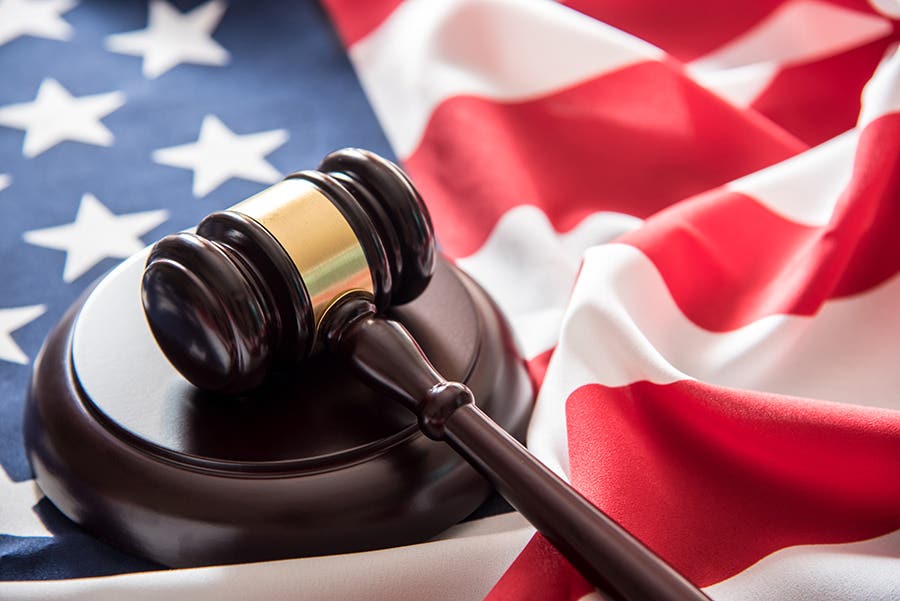Be Careful If Using a Precious Metal IRA
In my judgment, if you are looking to place assets in a Precious Metals IRA, you should do at least two things. First, compare the products you are looking for with several companies. The second is to consider only dealing with a business that has at least one PNG member on staff.
In doing research for the economic development and jobs creation of a state’s sales and use tax exemption for the in-state retail sales of precious metals bullion, coins, and sometimes even currency, I looked into the locations of businesses that advertise nationally to help customers establish a Precious Metals Individual Retirement Account (IRA).
The Taxpayer Relief Act of 1997 broadened the allowable forms of investments that could be held in an IRA. Included in the expansion, starting in 1998, IRAs could own gold, silver, platinum, and palladium ingots and coins that met the purity standards specified in the legislation. In addition, US Mint Gold Eagles, which did not meet the required purity standards, were also specifically allowed to be held in a self-directed Precious Metals IRA.
I have written multiple times about the drawbacks of holding precious metals in an IRA, most recently, this article: Serious Limitations with Precious Metals IRAs. Just as one example, it makes little sense to own a tax-deferred asset in a tax-deferred account.
In my research, I found 26 businesses that nationally promoted their services of providing products to be held in Precious Metals IRA accounts. Every one of them was located in a state that has established sales and use tax exemption for precious metals, bullion, and coins. All but one of them were established in 1999 or more recently. In fact, 13 of these companies have only been in existence for ten years or less.
In quickly reviewing the Better Business Bureau (BBB) website for information on these companies, I saw several positive reviews posted. However, I also saw complaints, with one company having more than 50 posted. A large percentage of the complaints involved customers who later found out they were far overcharged for the products they purchased for their IRA compared to what they would have paid to most other coin dealers. There were also multiple complaints about exceedingly long fulfillment times. As an example, one customer was told it would take 4-6 weeks to deliver the merchandise to the customer’s IRA custodian, but it took four months for delivery.
Of these 26 firms, two are under current criminal indictments by federal and state officials for overcharging customers—roughly double the price than they would have paid to most other coin dealers. Another company has filed twice for Chapter 11 bankruptcy within the past two years but is still operating.
As you read the complaints, one frequent theme was that a company’s sales representatives persuaded buyers to acquire supposedly scarce high-grade proof coins instead of just selling bullion-priced merchandise—and at prices that turned out to be far higher than they could have been purchased elsewhere.
It was dismaying to me that even companies with many complaints filed with the Better Business Bureau still carried an A+ rating. To me, that says that a high BBB rating is relatively meaningless about the caliber of the company. What I found more useful on the BBB website was reviewing complaints that had been reported to the BBB and how they were resolved or not resolved.
Another issue I noticed with these companies that seem to be offering products for Precious Metals IRAs as their sole or dominant activity is how few of them have staff who are members of the Professional Numismatists Guild (PNG). The PNG requires members to sign a code of ethics and agree to arbitrate any disputes (Note: I served on a PNG arbitration panel in a dispute between two coin dealers where the owners of both were PNG members). The PNG Code of Ethics states, “to furnish sound advice to my non-professional customers on numismatic matters to the best of my ability,” and “To refrain from . . . buying or selling at unreasonable prices.”
One other caution I can suggest is to be careful with doing business with any company offering “free merchandise” if you deal with them. I have heard one radio commercial multiple times from one company saying they offer up to “$10,000 of free silver” if you buy through them. Offering free merchandise like this really means that the company is overpricing its merchandise compared to what you would pay another business that does not offer the “free” bonuses.
In my judgment, if you are looking to place assets in a Precious Metals IRA, at the minimum you should do at least two things. The first is to comparison shop the products you are seeking to acquire or that have been pitched to you by a sales representative. The second is to consider only dealing with a business that has at least one PNG member on staff. There are other precautions that you should take as you would with any investment you make. If you look out for your own best interests, you should be able to avoid later writing a complaint to the BBB.
The answer to last week’s numismatic trivia question.
Last week, I asked: Why were US branch mints established in Charlotte, North Carolina, and Dahlonega, Georgia? The earliest gold mines in the US were in North Carolina and Georgia. For those miners to convert their raw gold into usable coins, they needed to take the gold to the Philadelphia Mint, about a two-week round trip. While taking these journeys, mine operations ceased. To provide a better alternative, Templeton Reid opened a gold coin mint in Milledgeville, Georgia, in July 1830. When it was learned that his pieces did not meet US Mint standards for gold purity, he ceased operation in October 1830. The Betchlers, Christopher and his son August and nephew Christopher, began striking gold coins in Rutherford County, North Carolina, in 1831. The last issues were struck in 1852. Not only were their coins equal to US Mint standards for weight and purity, but some pieces also contained up to 1% more gold than US Mint coins. By reducing the travel time to convert their gold into spendable coins, these private competitors took substantial business away from the US Mint. In response, the US Mint opened branch Mints in Dahlonega, Georgia, and Charlotte, North Carolina. They began production in 1838 and struck their final issues in 1861 as the Civil War began. These two branch Mints only struck gold coins.
This week’s trivia question:
Here’s this week’s question. The founder of the American Numismatic Association, the ANA president during the ANA’s 100th anniversary, and the immediate past president of the ANA all have a common connection with which American university? (Hint: the long-time ANA logo looked a lot like this university’s logo.) Come back next week for the answer.
Patrick A. Heller was honored as a 2019 FUN Numismatic Ambassador. He is also the recipient of the American Numismatic Association 2018 Glenn Smedley Memorial Service Award, 2017 Exemplary Service Award, 2012 Harry Forman National Dealer of the Year Award, and 2008 Presidential Award. Over the years, he has also been honored by the Numismatic Literary Guild (including twice in 2020), the Professional Numismatists Guild, the Industry Council for Tangible Assets, and the Michigan State Numismatic Society. He is the communications officer of Liberty Coin Service in Lansing, Mich., and writes Liberty’s Outlook, a monthly newsletter on rare coins and precious metals subjects. Past newsletter issues can be viewed at www.libertycoinservice.com. Some of his radio commentaries titled “Things You ‘Know’ That Just Aren’t So, And Important News You Need To Know” can be heard at 8:45 a.m. Wednesday and Friday mornings on 1320-AM WILS in Lansing (which streams live and becomes part of the audio archives posted at www.1320wils.com).








